Landscape Design
10 Things to Know About Buying a Fire Pit for Your Yard
Here’s what to consider about material, style, fuel type, location, cost and safety when adding an outdoor fire pit
A dizzying array of options awaits you when it comes to buying a fire pit, whether you purchase a ready-made model or work with a craftsman to make one custom for your space. Either way, it can be tough to know where to begin.
To help guide your decision process, take a look at the following tips and considerations — including advice from five experienced architects and designers. With this information, you should be able to work with a designer to find the perfect fire pit to suit your style, needs, budget and location.
To help guide your decision process, take a look at the following tips and considerations — including advice from five experienced architects and designers. With this information, you should be able to work with a designer to find the perfect fire pit to suit your style, needs, budget and location.
A gas-burning fire pit in Dove Gray-colored concrete sits in a garden in Tucson, Arizona.
2. Style
Fire pits come in a range of shapes, sizes and designs that can fit with any backyard style and homeowner needs. The challenge is narrowing your options and finding the right one for you. A good place to start is to identify a fire pit that coordinates with your existing backyard design in style, color, shape or material. For example, landscape designer Elizabeth Przygoda-Montgomery of Boxhill chose this contemporary concrete fire pit to fit with the neutral tones of a backyard in Tucson, Arizona, and complement the modern style of the garden and pool area.
In addition to selecting a fire pit that fits in with the overall landscape style, Przygoda-Montgomery recommends choosing a model that suits how you intend to use it. “Look for features that fit you and your family,” she says. “If you’d like the ability to rest a glass on the edge of a fire pit, for example, make sure there is enough of a lip around it so you aren’t going to end up with warm wine after five minutes.”
Shop for more styles of fire pits
2. Style
Fire pits come in a range of shapes, sizes and designs that can fit with any backyard style and homeowner needs. The challenge is narrowing your options and finding the right one for you. A good place to start is to identify a fire pit that coordinates with your existing backyard design in style, color, shape or material. For example, landscape designer Elizabeth Przygoda-Montgomery of Boxhill chose this contemporary concrete fire pit to fit with the neutral tones of a backyard in Tucson, Arizona, and complement the modern style of the garden and pool area.
In addition to selecting a fire pit that fits in with the overall landscape style, Przygoda-Montgomery recommends choosing a model that suits how you intend to use it. “Look for features that fit you and your family,” she says. “If you’d like the ability to rest a glass on the edge of a fire pit, for example, make sure there is enough of a lip around it so you aren’t going to end up with warm wine after five minutes.”
Shop for more styles of fire pits
Need a pro for your landscape design project?
Let Houzz find the best pros for you
Let Houzz find the best pros for you
3. Size
Fire pit sizes range from small portable models to larger built-in styles. Choose a size and style that fits with your budget and location. Store-bought fire pit models commonly range from 24 to 30 inches in diameter. Built-in units can range from 36 to 58 inches across.
Height can range between low-to-the-ground fire bowls to taller models. If you’d like to be able to rest your feet on the lip of a fire pit, choose a model that’s either even with or slightly lower than standard seat height (typically 18 inches). Fire pit height compared to seat height also affects reflected warmth.
Pro tip: If you’d like the fire to warm you from your seat, aim for a lower fire pit. “Keeping [a fire pit] a little lower, at 18 to 20 inches, provides more heat to the body,” says landscape architect Phil Steinhauer of Designscapes Colorado.
Fire pit sizes range from small portable models to larger built-in styles. Choose a size and style that fits with your budget and location. Store-bought fire pit models commonly range from 24 to 30 inches in diameter. Built-in units can range from 36 to 58 inches across.
Height can range between low-to-the-ground fire bowls to taller models. If you’d like to be able to rest your feet on the lip of a fire pit, choose a model that’s either even with or slightly lower than standard seat height (typically 18 inches). Fire pit height compared to seat height also affects reflected warmth.
Pro tip: If you’d like the fire to warm you from your seat, aim for a lower fire pit. “Keeping [a fire pit] a little lower, at 18 to 20 inches, provides more heat to the body,” says landscape architect Phil Steinhauer of Designscapes Colorado.
Keep in mind how much space you’ll need for seating and circulation when determining the fire pit size. As a rule of thumb, budget on about 5 to 7 feet around all edges of a fire pit for chairs and movement through the area. “Make sure you design around the fire pit, leaving room for big, comfy chairs and ample mobility,” Przygoda-Montgomery says.
If you’re planning to add built-in seating, keep the distance between the back wall of the seating area and the fire between 40 and 48 inches.
If you’re planning to add built-in seating, keep the distance between the back wall of the seating area and the fire between 40 and 48 inches.
This ModFire portable fire pit can burn wood, propane or natural gas.
4. Permanent or Portable
Another consideration when buying a fire pit is whether you want the flexibility of a portable model or want to invest in a fire pit that will stay put as a permanent feature in your backyard. Lightweight portable fire pits can be a great option for renters; you can move them around and light them up in different areas of the backyard.
4. Permanent or Portable
Another consideration when buying a fire pit is whether you want the flexibility of a portable model or want to invest in a fire pit that will stay put as a permanent feature in your backyard. Lightweight portable fire pits can be a great option for renters; you can move them around and light them up in different areas of the backyard.
Carson Douglas Landscape Architecture designed this custom-built gabion fire pit in Santa Ynez, California. The fire pit runs on propane with a fuel tank concealed in the hillside nearby.
5. Material
Fire pits come in a variety of materials, including stone, metal, concrete or a mixture of multiple materials. Choose a material that suits your taste, coordinates with the design of your backyard and holds up well to stains and frequent use.
“There are ups and downs from each material,” says landscape architect William Carson Joyce of Carson Douglas Landscape Architecture, who co-designed the fire pit pictured here. “Concrete is durable but can stain from soot. Powder-coated metal is durable but can get hot. Natural stone is great but again can stain and occasionally will crack from heat if not built correctly.” For clients in Santa Ynez, California, Joyce chose to design a fire pit using a mix of materials in a style inspired by gabion walls.
5. Material
Fire pits come in a variety of materials, including stone, metal, concrete or a mixture of multiple materials. Choose a material that suits your taste, coordinates with the design of your backyard and holds up well to stains and frequent use.
“There are ups and downs from each material,” says landscape architect William Carson Joyce of Carson Douglas Landscape Architecture, who co-designed the fire pit pictured here. “Concrete is durable but can stain from soot. Powder-coated metal is durable but can get hot. Natural stone is great but again can stain and occasionally will crack from heat if not built correctly.” For clients in Santa Ynez, California, Joyce chose to design a fire pit using a mix of materials in a style inspired by gabion walls.
Joyce used a custom powder-coated metal frame filled with local sandstone — a material also used in other areas of the landscape. The fire balls in the flame area are made of concrete.
If you are using a natural gas or propane-burning model, you may also be able to select the fire media (material in the flame area that covers the burner). Options range from decorative balls to lava rock and fire glass in many colors, sizes and shapes.
If you are using a natural gas or propane-burning model, you may also be able to select the fire media (material in the flame area that covers the burner). Options range from decorative balls to lava rock and fire glass in many colors, sizes and shapes.
6. Cost
Fire pits have a wide range of costs. With a fire pit made using stacked stones in a ring or a basic model (typically made of metal and set up for wood burning only), you can keep the price under $100. Freestanding fire pits made from materials such as stone, concrete or powder-coated metal can run from $300 to $2,000 or more, depending on design. For custom and built-in models, budget $1,000 to $5,000 or more.
Fire pits have a wide range of costs. With a fire pit made using stacked stones in a ring or a basic model (typically made of metal and set up for wood burning only), you can keep the price under $100. Freestanding fire pits made from materials such as stone, concrete or powder-coated metal can run from $300 to $2,000 or more, depending on design. For custom and built-in models, budget $1,000 to $5,000 or more.
Natural gas fuels the 42-inch-wide Cor-Ten steel Bol fire pit by Paloform that anchors this San Francisco backyard.
7. Fuel Type
Choose among three fuel options: wood, propane or natural gas. Wood-burning fire pits offer the classic crackling fire sound but are increasingly regulated due to environmental concerns about air-polluting smoke. Propane and natural gas offer the advantages of being smoke-free, easier to clean up and quicker to turn on and off.
For this terraced San Francisco backyard, landscape designer Beth Mullins of Growsgreen Landscape Design used a natural gas-powered Cor-Ten steel fire pit to anchor a cozy seating area close to the house. It provides warmth on foggy evenings.
See more Cor-Ten steel fire pits on Houzz
7. Fuel Type
Choose among three fuel options: wood, propane or natural gas. Wood-burning fire pits offer the classic crackling fire sound but are increasingly regulated due to environmental concerns about air-polluting smoke. Propane and natural gas offer the advantages of being smoke-free, easier to clean up and quicker to turn on and off.
For this terraced San Francisco backyard, landscape designer Beth Mullins of Growsgreen Landscape Design used a natural gas-powered Cor-Ten steel fire pit to anchor a cozy seating area close to the house. It provides warmth on foggy evenings.
See more Cor-Ten steel fire pits on Houzz
Mullins prefers smoke-free options using natural gas or propane. Both choices come with pros and cons: If you choose natural gas, prepare to potentially pay more for installation. You’ll also need to obtain a permit in order to extend a gas line. “Propane saves on [the] cost of not having a gas line extended or permitted,” she says, but she adds that you’ll need to figure out where to hide the propane tank, ideally in a spot where it’s out of sight but still easy to refill.
8. Permitting
In general, you do not need a permit to install a standard-size backyard fire pit. If you choose a fire pit that runs on natural gas, you may need a permit to extend your gas line. Some counties may require a site inspection by local fire officials to check that your proposed location is fire-safe. Fire pits that are considered extra-large (over 4 feet in diameter) may require a permit or have other safety or installation requirements. Check your city building codes and local authorities before getting started.
In general, you do not need a permit to install a standard-size backyard fire pit. If you choose a fire pit that runs on natural gas, you may need a permit to extend your gas line. Some counties may require a site inspection by local fire officials to check that your proposed location is fire-safe. Fire pits that are considered extra-large (over 4 feet in diameter) may require a permit or have other safety or installation requirements. Check your city building codes and local authorities before getting started.
Randy Angell Designs designed this fire pit for a backyard in Dallas. The fire pit runs on natural gas and is made of fire brick covered with White Birch Honed Panel limestone, from Realstone Systems, with a Lueder limestone cap.
9. Location
Building regulations will dictate where your fire pit can and cannot be in your yard, so check those first. Other things to consider when choosing a location for a fire pit include space constraints, fuel type and how you’d like to use the fire pit.
“If a fire pit is part of a larger design-build project, one has to consider how it flows with the rest of the design,” says designer Randy Angell. This includes site lines from the house and how the materials work together. For this project he chose to position the fire pit as a second seating area alongside the pool, where it acts as an inviting evening destination when viewed from the house. Once at the fire pit, guests can look over the water.
Another tip from Angell: “Keep in mind that the main use of the fire pit will be in the cooler months. From what direction are the prevailing cold winds? It’s best to situate the fire pit in a space where it will be protected from these winds.”
9. Location
Building regulations will dictate where your fire pit can and cannot be in your yard, so check those first. Other things to consider when choosing a location for a fire pit include space constraints, fuel type and how you’d like to use the fire pit.
“If a fire pit is part of a larger design-build project, one has to consider how it flows with the rest of the design,” says designer Randy Angell. This includes site lines from the house and how the materials work together. For this project he chose to position the fire pit as a second seating area alongside the pool, where it acts as an inviting evening destination when viewed from the house. Once at the fire pit, guests can look over the water.
Another tip from Angell: “Keep in mind that the main use of the fire pit will be in the cooler months. From what direction are the prevailing cold winds? It’s best to situate the fire pit in a space where it will be protected from these winds.”
This custom-built fire pit by Designscapes Colorado in Evergreen, Colorado, runs on natural gas. The faux log set was custom-made by Fire on Demand in Breckenridge.
10. Safety and Other Considerations
Consider fire-safety measures when operating an outdoor fire pit and take measures to reduce risk. Make sure everyone in the house knows how to turn off or put out the fire feature, and never leave young children unattended around the flames.
Both location and choosing a fire-safe flooring material around the fire pit can make a big difference in increasing safety. Fire pits should be positioned at least 10 feet away from buildings and fences, on level ground and in an open area without overhanging trees. Fire-safe outdoor flooring materials to consider include: decomposed granite, crushed gravel, concrete, flagstone pavers or bare earth raked free of all flammable debris.
For wood-burning fire pits, it’s a good idea to have a spark arrester (screen to catch sparks).
10. Safety and Other Considerations
Consider fire-safety measures when operating an outdoor fire pit and take measures to reduce risk. Make sure everyone in the house knows how to turn off or put out the fire feature, and never leave young children unattended around the flames.
Both location and choosing a fire-safe flooring material around the fire pit can make a big difference in increasing safety. Fire pits should be positioned at least 10 feet away from buildings and fences, on level ground and in an open area without overhanging trees. Fire-safe outdoor flooring materials to consider include: decomposed granite, crushed gravel, concrete, flagstone pavers or bare earth raked free of all flammable debris.
For wood-burning fire pits, it’s a good idea to have a spark arrester (screen to catch sparks).
This fire pit in Colorado designed and built by Designscapes Colorado is set back away from trees and is surrounded by a flagstone patio made of locally sourced Moss Rock and Colorado Buff flagstone. The stone floor reduces the risk of a stray spark falling and igniting.
Whatever style or size of fire pit you choose, there’s a good chance it will become a favorite evening hangout spot that will inspire new traditions. “I think that fire pits provide a great opportunity for casual conversation, whether it’s in a small or large group,” Steinhauer says. “Different from a fireplace, a fire pit is much more the interpretation of a simplified campfire that is great for roasting marshmallows, sipping hot chocolate and keeping warm on chilly summer evenings.”
Whatever style or size of fire pit you choose, there’s a good chance it will become a favorite evening hangout spot that will inspire new traditions. “I think that fire pits provide a great opportunity for casual conversation, whether it’s in a small or large group,” Steinhauer says. “Different from a fireplace, a fire pit is much more the interpretation of a simplified campfire that is great for roasting marshmallows, sipping hot chocolate and keeping warm on chilly summer evenings.”
Tell us: Do you have an outdoor fire pit? Show us in the Comments.
More on Houzz
Browse more photos of fire pit inspiration
5 Patios With Fire Features That Are Smoke-Free
Work with a landscape designer
Shop for your outdoor space
More on Houzz
Browse more photos of fire pit inspiration
5 Patios With Fire Features That Are Smoke-Free
Work with a landscape designer
Shop for your outdoor space

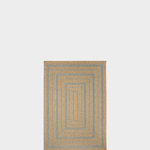
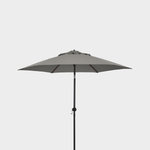
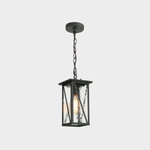
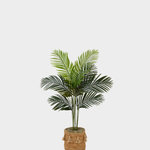
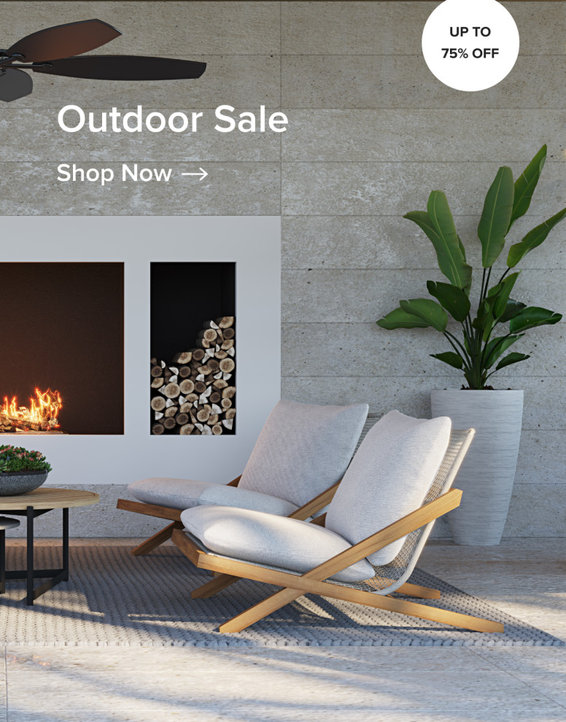
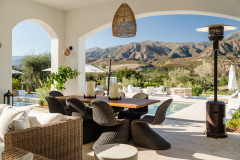







Before you jump into buying a fire pit, check with your city building codes and local authorities for regulations pertaining to outdoor fire pit placement or restrictions for burning wood. If you live in a condo or apartment complex, also check with your building or homeowners association to see if there are any regulations regarding outdoor fire pits. If you’re renting, run it past your landlord.
There are often regulations regarding fire pit placement for safety, such as siting a fire pit at least 10 feet away from buildings and fences. Some counties may require a site inspection by local fire officials to check that your proposed location is fire-safe. If counties regulate fuel type for environmental reasons, skip wood-burning models and opt for smoke-free ones that run on propane or natural gas.
Find a landscape architect near you